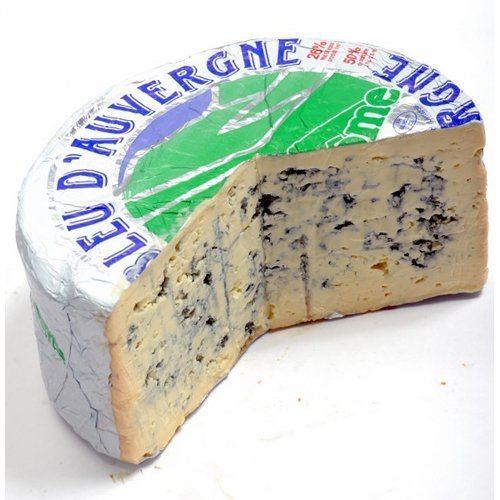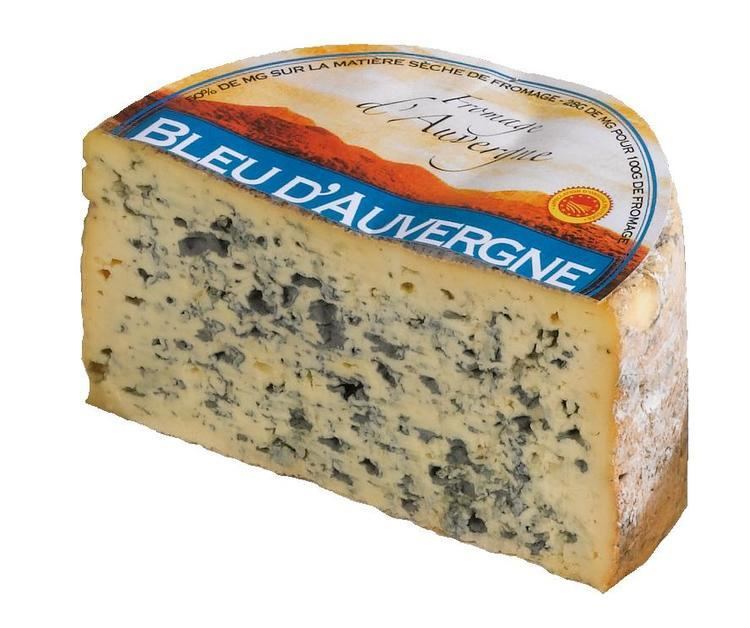Source of milk Cow's milk Aging time 2 months Milk source Dairy cattle Aging 2 months | Pasteurized No Certification AOC Auvergne 1975 Texture Soft Cheese type Blue cheese | |
 | ||
Similar Fourme d'Ambert, Cantal cheese, Saint‑Nectaire, Milk, Salers cheese | ||
Vive le cheese bleu d auvergne recipe
Bleu d'Auvergne ([blø dovɛʁɲ]) is a French blue cheese, named for its place of origin in the Auvergne region of south-central France. It is made from cow's milk, and is one of the cheeses granted the Appellation d'origine contrôlée from the French government.
Contents

Bleu d'Auvergne is of relatively recent origin, developed in the mid-1850s by a French cheesemaker named Antoine Roussel. Roussel noted that the occurrence of blue molds on his curd resulted in an agreeable taste, and conducted experiments to determine how veins of such mold could be induced. After several failed tests, Roussel discovered that the application of rye bread mold created the veining, and that pricking the curd with a needle provided increased aeration. It allowed the mold to enter the curd and encouraged its growth. Subsequently, his discovery and techniques spread throughout the region.

Today, bleu d'Auvergne is prepared via mechanical needling processes. It is then aged for approximately four weeks in cool, wet cellars before distribution, a relatively short period for blue cheeses.

Bleu d auvergne fermier
Properties and uses

Bleu d'Auvergne has a strong and pungent taste, but to a lesser extent than other blue cheeses; it is less salted, with a creamier and more buttery taste and a moister texture. Some recipes also use a weaker form of mold, Penicillium glaucum, to create the blue veins, rather than the Penicillium roqueforti used in Roquefort and other blue cheeses.
Bleu d'Auvergne is often used in salad dressings and pasta seasonings, and also it is a good cheese for snacking. Sweet wines such as dessert - style riesling and sauvignon blanc or strong, robust red wines are commonly recommended to accompany it as well as rich, dark beer such as English barley wine or American porter, which have both the sweetness and bold flavor required to balance the cheese.
